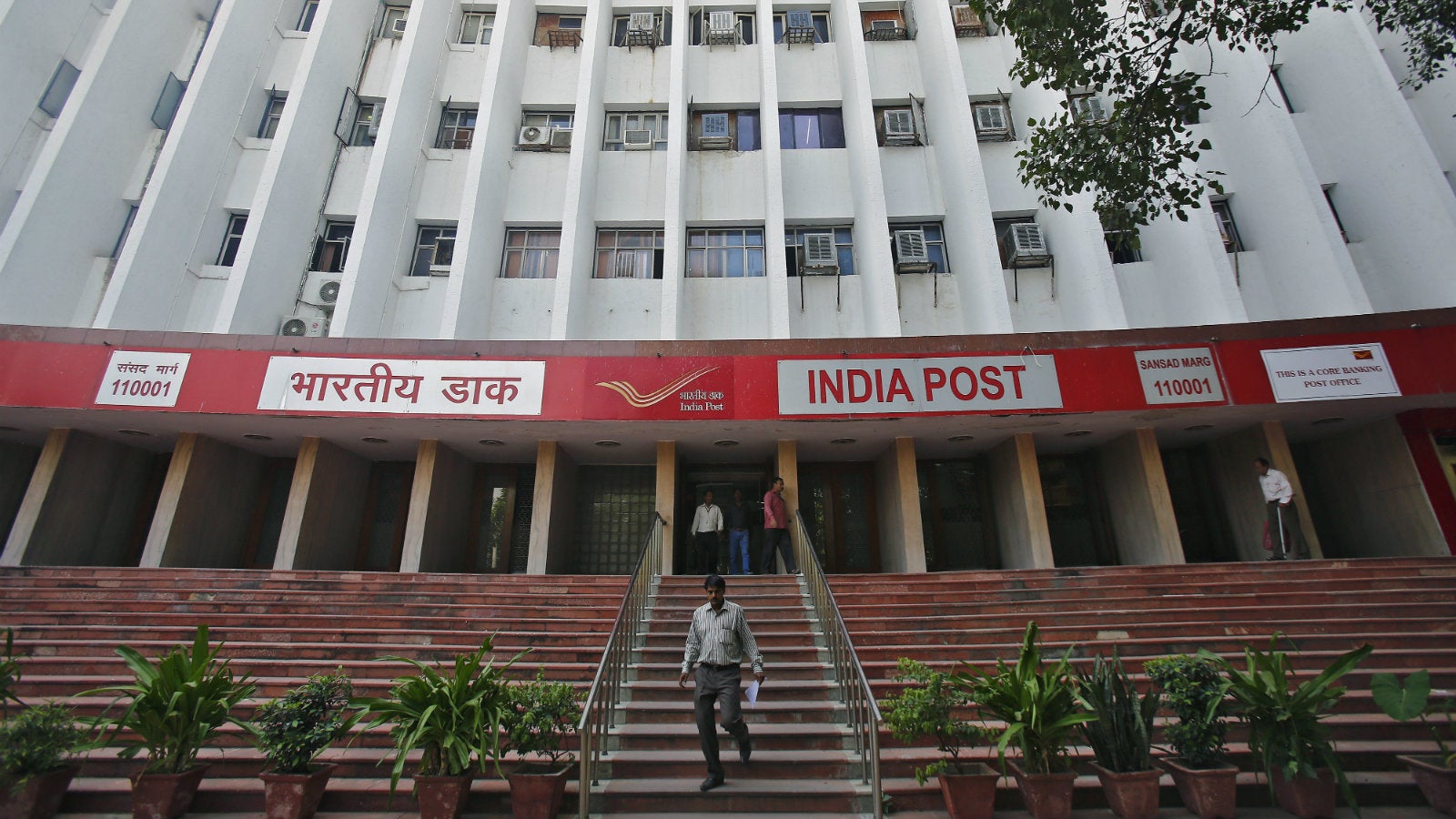India will spend $120 million to transform its 180-year-old postal system into a bank
In 1837, the British consolidated India’s postal system into one nationwide service. Almost 180 years later, the world’s largest postal network is going to transform into a bank.


In 1837, the British consolidated India’s postal system into one nationwide service. Almost 180 years later, the world’s largest postal network is going to transform into a bank.
The Indian government has cleared a proposal to set up an India Post payments bank, with 650 branches that will be linked to the country’s post offices. A payments bank can collect deposits of up to Rs1 lakh ($1,500) and offer remittances, debit cards, and various payments services to customers, but cannot lend.
The payments bank, one of the country’s first, is scheduled to be operational by September 2017. It will be capitalized with Rs800 crore ($120 million) and will be “professionally managed” with its own CEO, telecom minister Ravi Shankar told the Press Trust of India.
But perhaps its biggest advantage as a financial services provider will be India Post’s incredible access to the hinterland. Roughly 90% of India Post’s 154,000 locations are in rural areas, which gives it access to parts of the population that most banks have not yet reached.
According to the news site NDTV, Prasad said dozens of international consortiums are interested in working with India Post’s payments bank to supply insurance and banking products. “50 top names are here including Barclays and others. Talks are on and a huge matrix will be created,” Prasad was quoted as saying.
Payments banks are a new class of financial services providers in India. In August 2015, the Reserve Bank of India (RBI) had granted in-principle approvals to 11 players, including India Post, out of the 41 applications it had received. The approved applicants had 18 months to fulfill a list of requirements and get a full licence.
Three private sector players have already called off their plans.
In March, Cholamandalam Investment dropped its proposal, after considering the long gestation period for payments banks to become profitable. On May 20, Indian billionaire Dilip Shanghvi abandoned his plans to tie up with IDFC Bank and an arm of Norway’s Telenor for a similar venture. Days after that, Indian IT major Tech Mahindra decided to surrender its payments banks licences, as it felt that the huge competition would have hurt its margin potential.
However, some others who had received an early go-ahead from the RBI remain upbeat about their ventures. One97 Communications, which owns the mobile wallet and e-commerce company Paytm, plans to launch its payments bank before November this year. Others such as Vodafone and FINO PayTech are also taking their plans forward.
Offering banking services through the post office isn’t a new idea. The United States Postal Service (USPS) did it for more than 50 years, until the system was dismantled in 1967. The closure of thousands of US bank branches since the 2008 financial crisis and the increasing number of Americans without access to traditional banking services has helped revive a debate over whether it’s time to bring banking back to the USPS. Supporters of the idea say it also could be a way to help keep the cash-strapped USPS afloat financially.
India Post, in recent years, has survived on business from e-commerce players in the country. The department works with several leading online retailers, including Amazon, Flipkart, and Snapdeal. In the last nine months of 2015, India Post more than doubled its revenue from cash-on-delivery consignments of e-commerce companies to Rs 1,000 crore, compared to the Rs 500 crore it made in the entire previous year.